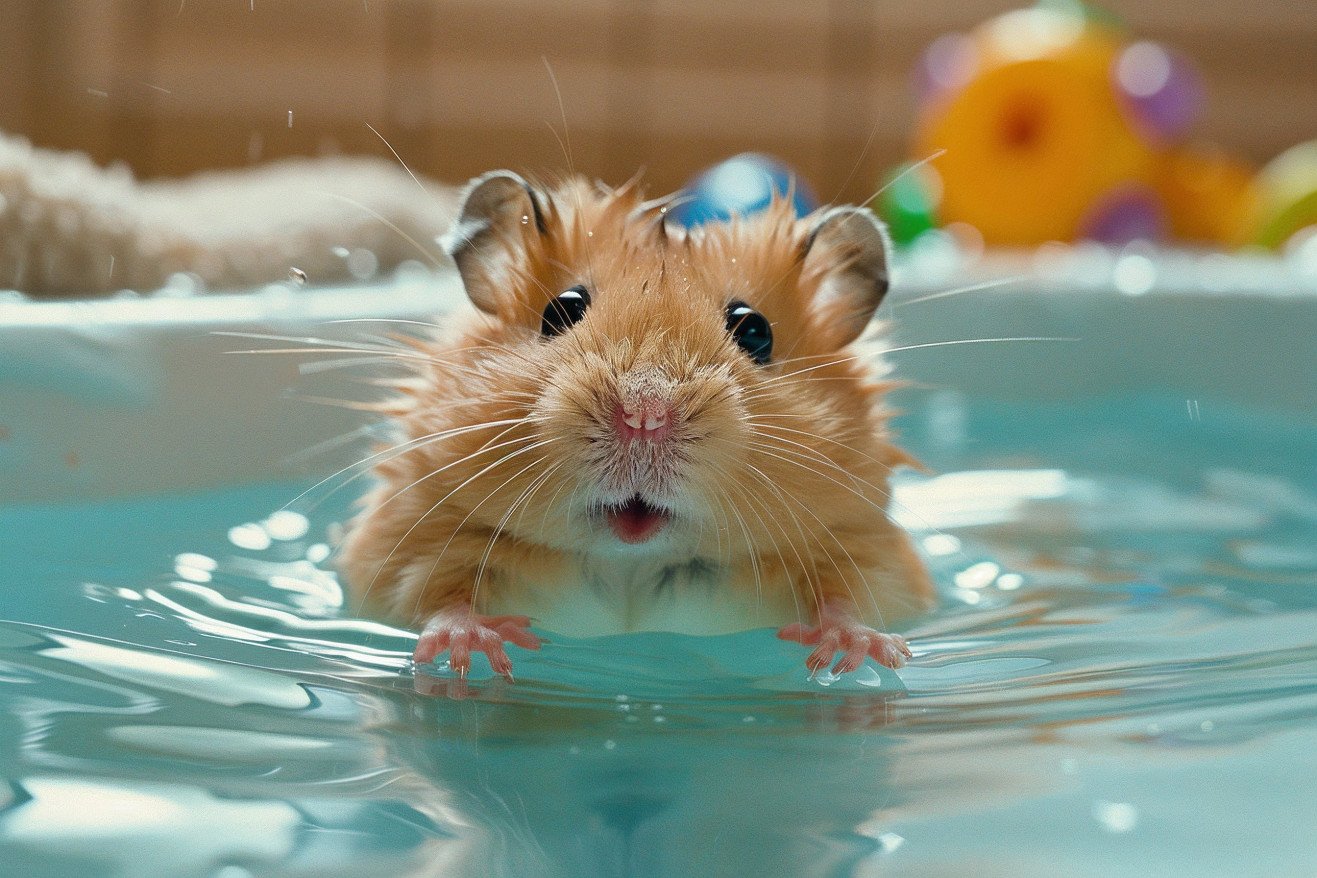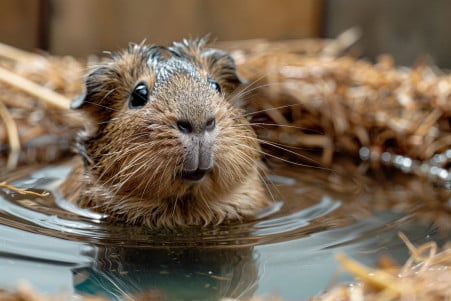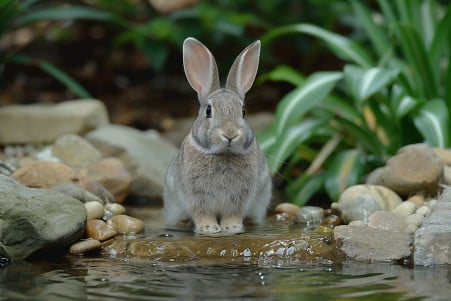Can Hamsters Swim? What Owners Need to Know
25 May 2024 • Updated 23 May 2024

If your hamster has accidentally taken a tumble into some water or you're thinking about giving them a swimming lesson, you may be asking yourself – can these little furballs swim? While hamsters aren't born knowing how to swim, they can swim and will often enjoy the occasional controlled swim if the right safety measures are in place.
By reviewing the findings of hamster researchers, vets, and other hamster authorities, we'll learn more about the swimming capabilities and safety concerns of these small pets. We'll also provide you with some helpful advice on how to ensure that your hamster can swim safely. This way, you'll have a better idea of what your hamster can handle in the water and how to make sure they have fun while staying safe.
Can Hamsters Swim?
Hazards of Water Exposure for Hamsters
Hamsters should not get wet, because water exposure can cause them a lot of stress. Their small size also means they are susceptible to hypothermia when wet, which can result in sickness. If your hamster does get wet, it is important to immediately dry your hamster with paper towels in a warm environment.
To avoid hazards, hamster habitats should never include deep water dishes that the hamster could drown in. Even short-term exposure to water can remove natural oils from their skin, which can lead to skin problems and other health concerns. The wetness of a hamster's thick fur can also interfere with its ability to insulate its body, which means it is important to make sure they are completely dry to avoid hypothermia.
How to Bathe and Clean a Hamster
Because hamsters are such diligent groomers, they don't need to be bathed in water regularly, says Petco. If you do need to bathe your hamster, make sure the water is lukewarm and dry your pet off quickly afterward. wikiHow warns against using shampoo, soap, or a hairdryer, all of which can be harsh on a hamster's sensitive skin.
Instead of water baths, Rachel Got Hamsters suggests offering a sand bath, which will help your hamster keep its coat clean and well-groomed. The sand bath allows the hamster to clean itself by rolling around in the sand. However, for long-haired hamsters like Syrian hamsters, you may need to brush them occasionally to remove debris from their thick fur, says Petco.
Keeping your hamster's habitat clean and dry is important to your pet's health and happiness. By using the right bathing methods and offering sand baths, you can make sure your hamster stays clean and free of skin problems and other issues that can be caused by too much exposure to water.
How to Give Hamsters Water
Both water bottles and water bowls come with their own set of advantages and disadvantages. Hamster Central explains that water bottles can keep bedding from getting into the water, but the angle at which the hamster has to drink can be uncomfortable and lead to dental problems. Meanwhile, water bowls can be more comfortable for the hamster to drink from but are more likely to get dirty from bedding and be knocked over.
Five Little Hams suggests using a shallow, ceramic or glass water bowl that is placed on a flat surface and kept away from the bedding to ensure the hamster can drink safely. This way, the hamster won't be at risk of drowning, but they can still drink comfortably. No matter which option you choose, Forever Vets notes that it's important to clean the water source regularly to prevent bacteria from building up and making the hamster sick.
Cage Cleaning for Hamster Hygiene
Instead of full cage cleanings, Petco suggests that you do a daily spot cleaning. This includes removing any dirty bedding, cleaning out the food and water dishes, and wiping down the habitat. Rachel Got Hamsters says that this will help keep your hamster's stress levels down and keep the cage as clean as possible for them.
You can also clean accessories like wheels and hides with soap and water, according to Rachel Got Hamsters. For dwarf hamsters, the site also suggests that you sift and clean the sand baths to make sure that they stay clean and fresh. This is especially important because, according to Forever Vets, dirty bedding, food, and water can all lead to your hamster getting sick.
Differences Between Breeds
The three primary hamster breeds are Syrian, Dwarf, and Roborovski. Syrian hamsters are the largest breed, with a maximum length of 18cm according to The Different Types of Hamster • Petmania. On the other hand, Dwarf hamsters like the Chinese and Siberian are much smaller and more active.
That said, there is little to no research on differences in water tolerance between the various breeds of hamsters. Types of Hamster Breeds: Helpful Insights & Care Tips does mention that because of their size, Syrian hamsters are generally better suited for larger habitats, but it doesn't say anything about differences in water tolerance between breeds.
That said, regardless of breed, all hamsters should be watched closely when they are around water to avoid the potential for drowning or other health risks. As mentioned above, even brief exposure to water can be dangerous for these animals, so it's important for pet owners to make sure their hamsters are safe when they are near any water.
Conclusion: How to Safely Let Your Hamster Play in Water
Although hamsters are not built to swim, they can be allowed to play in water if certain precautions are taken. Hamsters are not built for swimming due to their small size, round shape, and lack of webbed feet, and they will tire easily if left in water for too long. In addition, hamsters have a natural fear of being submerged in water and can even drown if they are not supervised.
To ensure that your hamster has a positive experience with water, make sure the water is shallow and that your hamster has an easy way to get out of the water. In general, hamsters should be bathed infrequently, with sand baths being the best way to keep them clean. According to PetMD, unless your vet tells you otherwise, most hamsters don't need to be bathed with water and soap. Instead, you can use pet-safe wipes or a warm, damp cloth to clean your hamster's bottom if necessary.
Keeping your hamster's habitat clean and dry is important for your hamster's health and well-being. Regular spot cleaning, cleaning and maintaining accessories, and keeping up with sand baths will help ensure that your hamster's habitat is clean and safe, which will help reduce stress and the risk of illness. With the right precautions and care, you can make sure that your hamster has a safe and positive experience with water.


